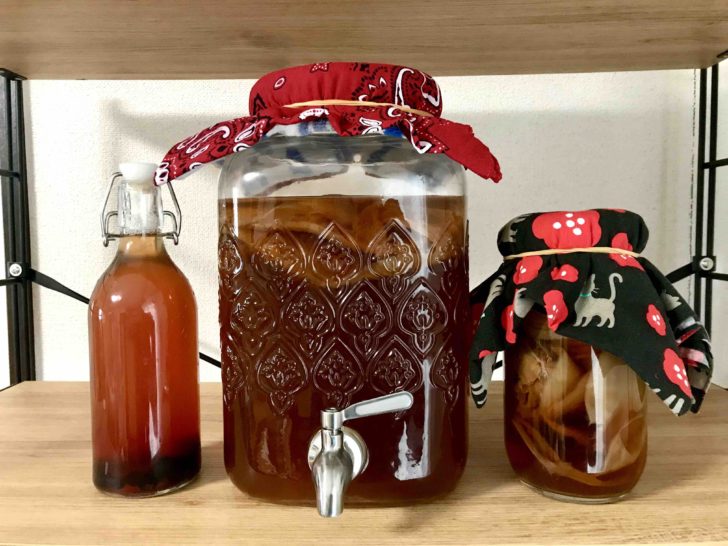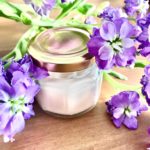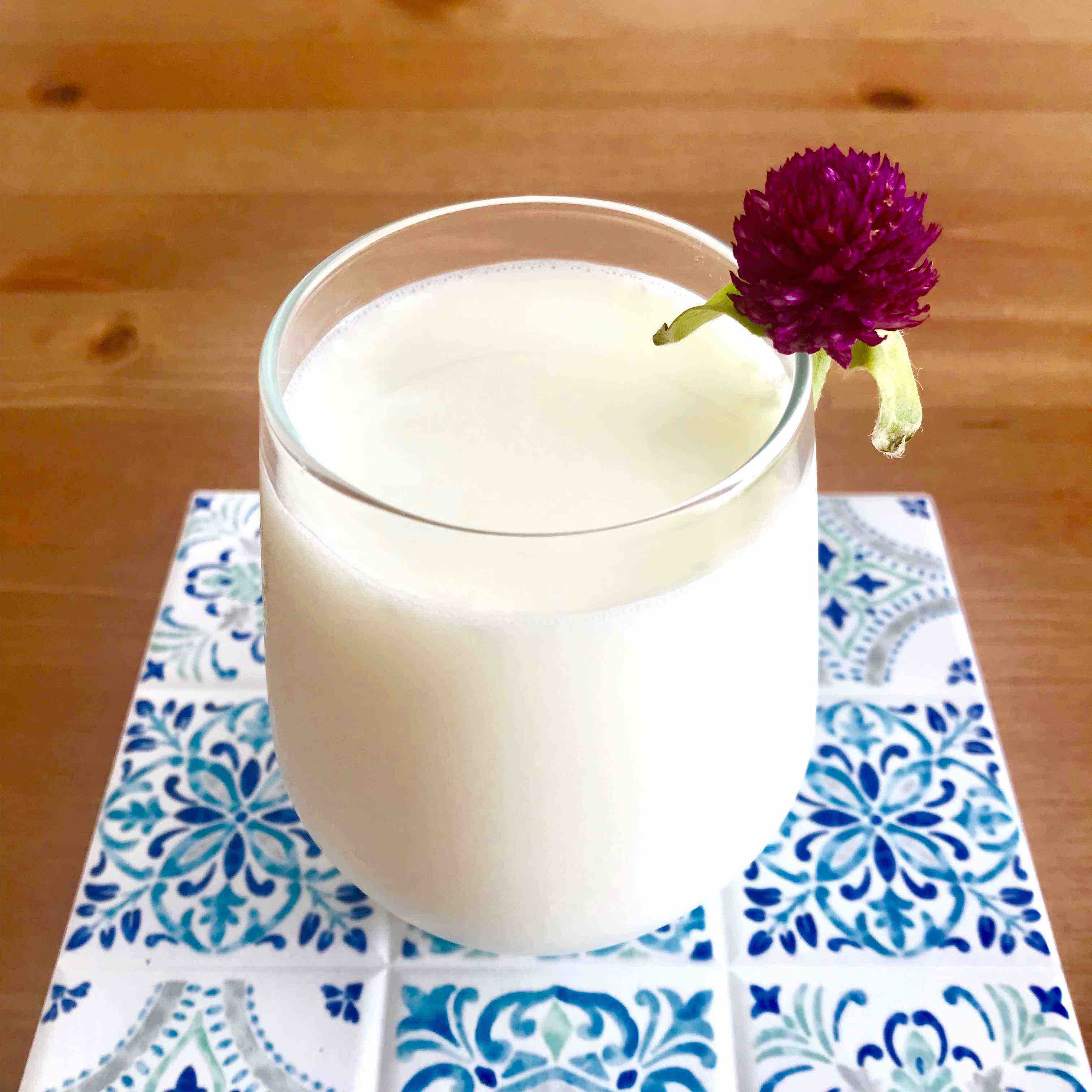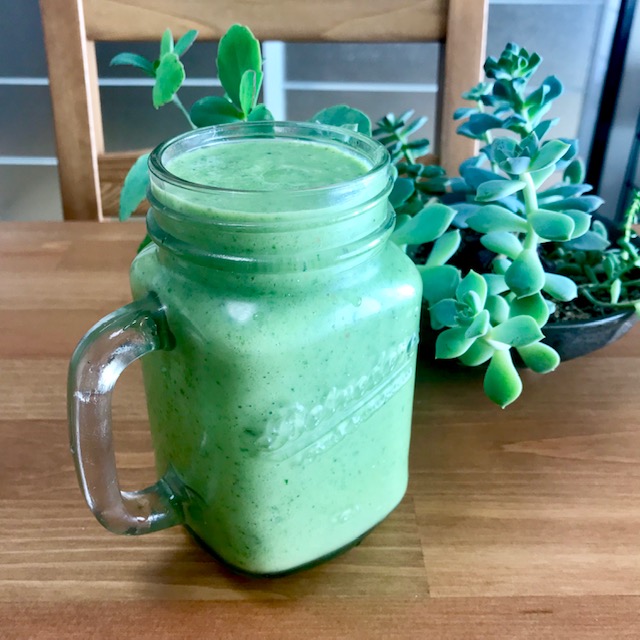As I mentioned in my post about Milk Kefir, my interest in fermented foods was triggered by a debilitating IBS. In fact, the first thing I tried while researching about fermented foods was “Kombucha”. Funny fact is that here in Japan “Kombucha” means “Kombu Seaweed Tea” which is commonly consumed.
The first time I heard about Kombucha, was from a doctor on Youtube that was eagerly talking about it and saying how delicious it was. As I was listening to her, I was getting more and more suspicious about it, since in my mind Kombucha meant something else. Is a Westerner saying it is super delicious, and on top of that saying it is super popular in the US? Something is not making sense here…So, are you saying that my prank to western fellows when I gave them Kombu Seaweed Tea, to see their vomiting faces saying it smelt like rotten seawater, was not going to work anymore? Wait. What is going on?
Table of Contents
What is Kombucha?
So, let’s start from the beginning. “Kombucha” is a fermented beverage that has been handed down from Russia, Mongolia, the Himalayas, and China since ancient times. Black tea, green tea and other teas are sweetened with cane sugar and fermented by adding a SCOBY (Symbiotic Colony Of Bacteria and Yeast), which is simply a mass of yeast and bacterias.
As I said before, this bacterial strain grows in tea and sugar and produces a slimy, thin, rubbery film on the tea surface, which by continuing the fermentation it gradually grows thicker. In addition, some bacterias grow with an appearance of jellyfish tentacles, so of course it is not pretty but when a delicious Kombucha is made, you start seeing the SCOBY as your cute-little-slimy pet. I sometimes talk to it (LOL).
Fermentation takes a few days to a few weeks to produce the refreshingly acidic beverage that is characteristic of Kombucha. The taste varies greatly depending on the size of the SCOBY, the room temperature, and the fermentation period. The longer it ferments, the more vinegary it turns. I usually make about four liters, but given the amount of the SCOBY that I currently own, it ferments to the taste I like in just a week.
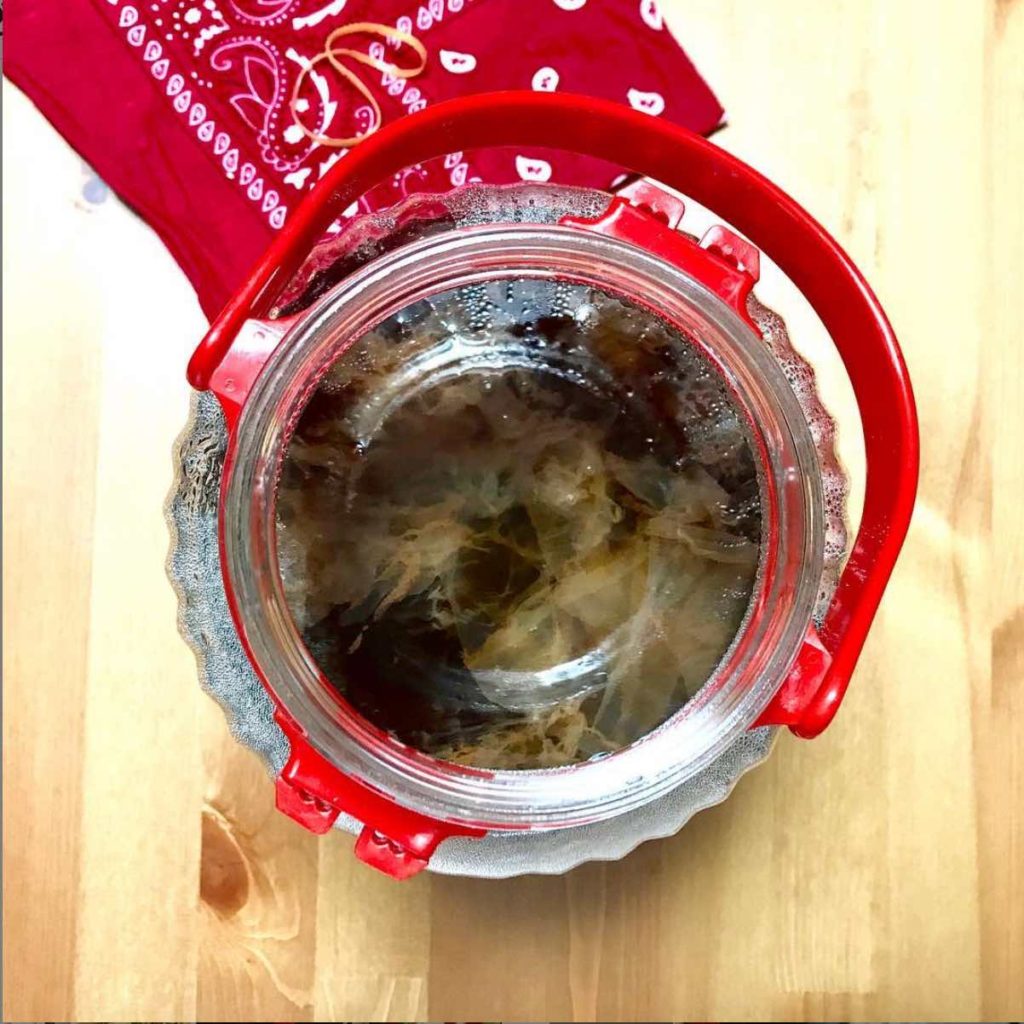
My very first Kombucha batch. 
Fermentation took about a month.
In Japan, it is known as “Tea Mushroom”
So, if Kombucha means “Kombu Seaweed Tea”, how can we call this in Japanese? Is this even known here? Well, turns out, in Japan it was brought in from Russia in the 1980s and became very popular amongst mothers. The other day, I was telling a friend in his forties about Kombucha, and in fact he told me his mother was making it for the family. But, he also told me it was known as “Tea Mushroom” (because of its resemblance to a mushroom).
So, where does the name Kombucha come from? As I was doing my research, I found that it became known as “Kombucha” when it went to the United States in the 1990s. But, according to an article I just found on Forbs Online Magazine as of December 23rd, 2019; (https://www.forbes.com/sites/christinatroitino/2017/02/01/kombucha-101-demystifying-the-past-present-and-future-of-the-fermented-tea-drink/#68f8d6484ae2)
Its name is reportedly derived from Dr. Kombu, a Korean physician who brought the fermented tea to Japan as a curative for Emperor Inkyo. Eventually, the tea was brought to Europe as a result of trade route expansions in the early 20th century, most notably appearing in Russia (as “Kambucha”) and Germany (as “Kombuchaschwamm”).
Hu! So, it was first brought in to Japan, then went to Russia and came back to Japan in the 80s? Well, as trends come and go, it is very possible it faded and came back from another place.

SCOBY that has thicken. 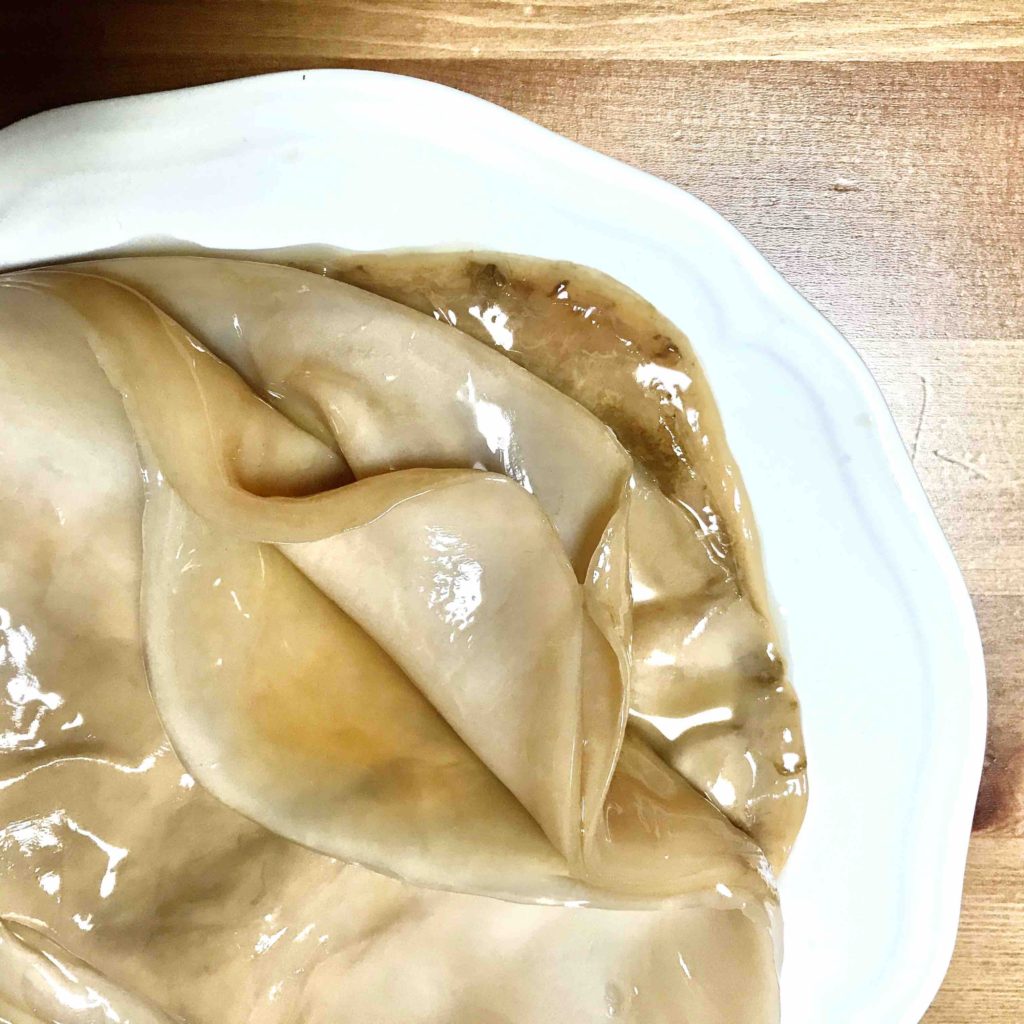
SCOBY layers.
In the US, it was established as a powerful healthy drink able to treat serious medical conditions. Nowadays, as most of you already know, Kombucha is sold in supermarkets with lots of different flavors, and it is now super accessible to anyone seeking for a substitute of sodas.
In Japan, it seems that the trend of the 1980s has diminished, and nowadays, it is mainly sold as a supplement, but I forecast that the Tsunami of the Kombucha boom will soon be coming back to Japan.
Kombucha and its effects on health
So you might be thinking, why is Kombucha so good for your health? In Japan, it is often seen as an enzyme drink with a dieting effect, but overseas, many people take it almost as a panacea. According to Sandor Ellix Katz, the author of ‘The Art of Fermentation;
Many enthusiasts regard kombucha as something of a miracle cure-all. Harald W. Tietze, an Australian promoter of kombucha, writes that he has received reports of kombucha being used to effectively treat disorders including arthritis, asthma, bladder stones, bronchitis, cancers……
Herbalist Christopher Hobbs recorded the following additional claims from discussions on an Internet bulletin board: Kombucha is said to cure AIDS, eliminate wrinkles and remove liver spots…….While people suffering from each of these conditions may indeed feel that their conditions improved by drinking kombucha, “there is no scientific data to back up any of these claims,” writes Hobbs. We cannot expect foods to be panaceas
One common explanation for the healing power of kombucha is that it contains glucuronic acid, a compound produced in our livers, which binds with various toxins for elimination
I would have to do more research on scientific studies proving the benefits of Kombucha, but from my experience so far, I feel it has a great diuretic effect and it has helped my digestion a lot. Also, I drink it simply because I like its flavor.
How to make Kombucha
Ok now, without any further ado, let’s make it.
First of all, it’s of course, a must getting a Kombucha SCOBY. If you do not have a friend who can give you a piece, it is totally fine. There are plenty of places and online stores that sell the bacteria. I, for example, bought the SCOBY from Amazon. So, if you are living in Japan, here is your option: Kombucha Starter Kit.
You can also buy a plain Kombucha bottle to drink and make sure you see the SCOBY particles in it. Then, you add some more sweetened tea to let it ferment for some weeks. It can take a while until you see a thin layer of SCOBY forming on top, but please be patient. Forming a full grown-up SCOBY from particles requires some time.
Let me show you how do I make it with the amount I usually make. If you are making less, please just take it as a reference.
Let’s get started!
Amount
3.8 – 4 liters
Materials
- SCOBY
- Water + Starter*: 3.8 – 4 liters
- Black tea bags: 8 (4 tbsp of tea leaves)
- Cane sugar / granulated sugar: 1 cup (about 200g)
- Approximately 5g (1 tsp) per 100ml of water.
- Heat-resistant wide-mouth glass container: 4 liters (I mostly use a drink server as in the picture)
- Clean kitchen cloth
- Rubber / string to stop the kitchen cloth
* ‘Starter’ is the fermented kombucha liquid. The kit I bought from Amazon includes not only the SCOBY, but also the starter. The starter has the role of facilitating fermentation of a new batch of kombucha in an acidic environment so that it protects the SCOBY from growing mold and other harmful bacterias.
Steps
- Wash the glass container with soap and water, then put it in a pot and boil for 5 minutes to sterilize it. (** Please refer to “Notes” below)
- Remove the glass container from the pot with tongs and let it air dry.
- Now, boil hot water to make tea. You do not have to boil all the water, as the remaining water can be used to cool down the tea!
- Turn off the heat, put the tea bags in the boiling water and steam them for 4 minutes. Then, remove the tea bags, add the sugar and dissolve it.
- The tea can be cooled down to room temperature, or it can be cooled down with the remaining water as mentioned above.
- Transfer the cooled tea to the glass container, add the SCOBY and the starter (Kombucha liquid).
- Cover the glass container’s mouth with a clean kitchen cloth and secure it with a rubber / string. (*** Please refer to “Notes” below)
- Let it sit in a clean place with a moderate temperature for about a week. (**** See “Notes” below)
- After about a week, scoop up the Kombucha liquid with a clean soup ladle, or as myself you can use a drink server. Finally, time to enjoy!
- Repeat the same process to make a new batch. At this point, be sure to add (into a new and clean container) the SCOBY and the already fermented Kombucha liquid (about 20% of the container you want to make) as a starter.
Ways to enjoy Kombucha
There are many ways to enjoy Kombucha, but today I would like to show you three ways to start with.
- Enjoy it as it is.
- Add the Kombucha in a pitcher. Then, cut some fruits or add some fruit juice, let it cool in the refrigerator and enjoy.
- Lastly, my favorite. Use frozen berries or cut some fruits. Then, put them in a swing bottle and add the Kombucha liquid. Finally, let it ferment for another two to four days and you will get a fizzy drink. (***** Please refer to “Notes” below)

Notes
- **The glass container used for fermentation needs to be sterilized by boiling. I recommend a heat-resistant type. If you only have a non-heat-resistant container, put it in a pot with room-temperature water and heat it. When the water starts to boil and reaches a 100℃, let it boil for about one minute, then take it out carefully with a tong. This will prevent the container to crack, due to sudden temperature differences. After disinfection, remember to air dry it.
- *** The reason for covering the jar with a kitchen cloth is to improve the air permeability so that the bacteria can breathe, and also to protect it from dust and fruit flies.
- **** The temperature preferred by kombucha is between 26°C and 32°C, but if it is cold in winter, fermentation will be slow and may take several weeks. If you want to speed up the fermentation, you will need to heat it with things like an electric blanket or a fermentation belt.
- ***** When adding the kombucha solution to a swing bottle, be sure to leave a headspace of about 2cm. Carbon dioxide accumulates in this space allowing you to trap the carbonation into the liquid as your brew ferments. That’s what makes it fizzy. Also, please be careful not to leave the bottle sealed up for too long, because if the pressure in the bottle builds up too much, it can explode. In summer, fermentation is fast so if you’re afraid of the bottle exploding, it would be safer to open it about once a day to burp it. However, please note that if you open the bottle too much, the power of carbonation will decrease, so if you prefer a stronger carbonation but you are still a little scared, I recommend you put it in a cardboard and ferment it in it just in case. Also, avoid poor quality or thin glass bottles for safety.
- In addition to cane sugar or granulated sugar, you can use coconut sugar or brown sugar, but the fermentation speed will be slower. I personally prefer the taste of the Kombucha made with white sugar.
- Remember that the bacterias in the Kombucha are alive. When disinfecting the bottle, do not use an antibacterial disinfectant or hot water. The Kombucha bacterias will die.
- Be sure to ferment in a glass container. Kombucha acid can corrode when exposed to metals and plastics for long periods of time.
- Avoid locations that are dusty, have a lot of airflow, are exposed to direct sunlight, are humid, dark, or are close to pets and/or plants. These conditions can cause mold.
- If mold grows on the SCOBY, throw it away and start over. I recommend you to have a ‘SCOBY Hotel’. This is just extra SCOBYs in a different container for in case things like this happen.
- If you want to stop the fermentation, put the lid on the container and put it in the refrigerator. Fermentation almost stops here, so just open the lid once a week, replace the container’s air with fresh air, and add a little bit of sweet tea to feed the bacterias.
- Mold can grow on the SCOBY surface if hygienic standards are not met. When it grows, it looks powdery and lumpy. What accumulates under the liquid is not mold, since mold needs oxygen to grow. If the surface is clean and smooth as shown in the picture, there is no problem.
- If the kombucha has become too sour, try diluting it with carbonated water or normal water and enjoy.
- If you feel an unpleasant smell or taste other than the pleasant sour smell similar to apple cider vinegar, please stop drinking.
- If you are ill, please consult your doctor before drinking. (Alcohol allergy, pregnancy, liver/kidney/immunity problems, thyroid abnormalities, gastritis, gastric ulcers, etc.)

SCOBY hotel 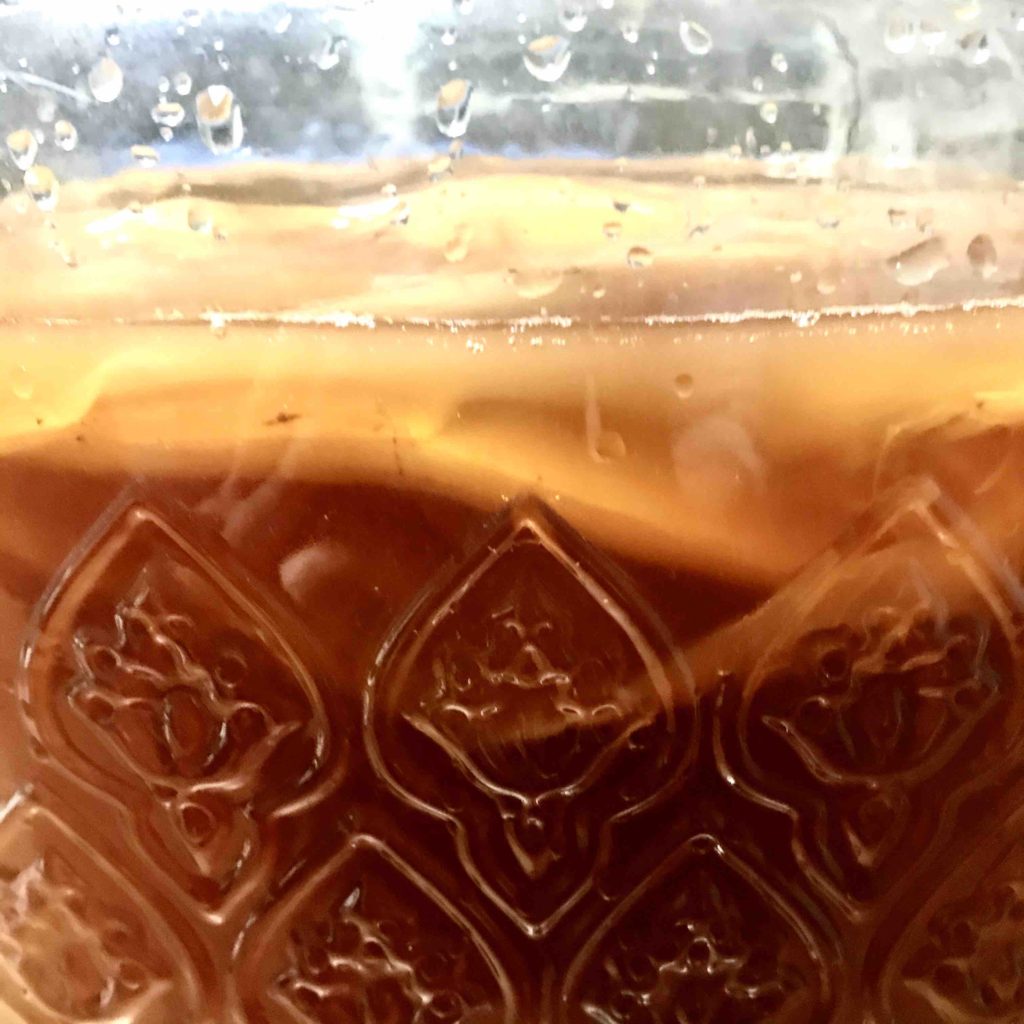
Kombucha in process of fermentation
Disclaimer
The information in this article is about my own health practices, and I am just sharing information based on my own experience. I will not be held responsible if your health is compromised. Be sure to do your own research, and collect information from other sources and/or ask your doctor. Take responsibility for your own health and act within common sense.
